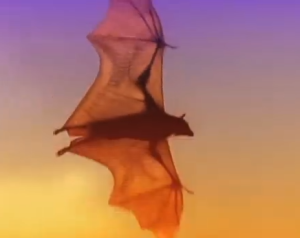By NewsDesk @infectiousdiseasenews
Queensland, Australia health officials are reminding people not to handle bats–dead or alive–after six Wide Bay people have required treatment after being scratched or bitten in the past 16 days.

Image/Video Screen Shot
Officials say all bats are potential carriers of Australian Bat Lyssavirus (ABLV) and any bite or scratch from a bat poses a risk of infection, which is why only trained and vaccinated professionals should handle them.
Wide Bay Public Health Physician Dr Margaret Young said in two of the recent cases requiring
treatment, people picked up what they believed was a dead bat.
“It can be difficult to determine if a bat is dead – and even if they’re dead they still pose an infection risk to humans, particularly due to their wing claw,” Dr Young said.
“In two of our recent cases of bat injuries, the people who handled them thought the bat was dead and
harmless, but in one case the bat wasn’t dead and in the other case the person was scratched by the
wing claw.”
“If you’re somehow bitten, scratched, had your skin nibbled or had your mucous membranes or broken
skin exposed to bat saliva, then you should always seek immediate medical assessment,” Dr Young
said.
“This applies even to minor scratches or abrasions from a bat, with or without bleeding, and even if you were previously vaccinated against rabies.”
According to Queensland Health:
- Australian Bat Lyssavirus (ABL) is closely related to the rabies virus.
- The best protection against being exposed to the virus is to avoid handling bats or flying foxes.
- There is no known risk of contracting ABL from bats flying overhead, contact with bat urine or feces or from fruit they may have eaten. Living, playing or walking near bat roosting areas does not pose a risk of exposure to the virus.
- A bat bite, scratch or mucous membrane exposure to bat saliva is necessary to transmit the virus. Usually bats do not approach humans, more commonly bat scratches or bites occur if someone is trying to ‘rescue’ an injured, sick or distressed bat.
- It is recommended that for any person who has been bitten, scratched, or had a mucous membrane exposure to bat saliva that treatment be commenced as soon as possible.Treatment involves a course of vaccinations that are necessary to protect the person against ABL.
Related:
New Zealand measles: More than 100 infants hospitalized, Auckland cases top 1000
Australia: 100 childcare centers report GI outbreaks in NSW in August


